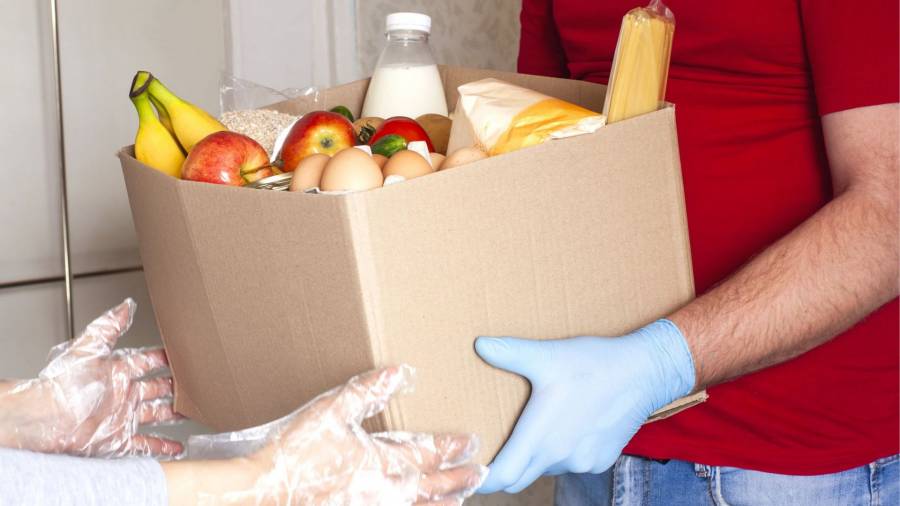COVID-19 – the end of rough sleeping?
The coronavirus pandemic has pushed the government to take urgent action on street homelessness

STRATEGY
Image: iStock

Liz Zacharias
Senior Consultant, Campbell Tickell
With the recent announcement of £105 million of additional funding from the Treasury to provide interim support for 15,000 vulnerable people accommodated during the pandemic (and around £19.8 million for the devolved nations) we could be in a position to really solve rough sleeping – at least in the short-term. The additional money will be used to support rough sleepers and those at risk of homelessness into tenancies, including through help with deposits for accommodation, and paying to secure thousands of alternative rooms already available and ready for use, such as student accommodation. This money won’t solve rough sleeping – it just enables the government to take a once and for all approach to finding the solution for the 15,000 people currently being accommodated in hotels.
The government has made some bold and sensible decisions in this area. For example: requiring all local authorities to bring all rough sleepers off the streets; hiring Dame Louise Casey (a veteran of the reduction in rough sleeping seen during the Blair years); and promising to create 6,000 new supported homes – 3,300 of these in the next 12 months.
Additionally, politicians have recognised that, as well as housing, people need support to recover from addiction and mental health issues. Or at least services that effectively help them manage mental health issues and sustain a tenancy. All of these – along with the new funding to stop those 15000 returning to the streets is welcome and could be a step change.
Government commitment uneven
However, the commitment to end rough sleeping is uneven. The statement from the minister for rough sleeping and housing, Luke Hall, that councils in England should “seek to encourage people, where appropriate and possible, to return to friends and family,” shows a questionable grasp of his brief.
So, now that we have taken thousands of people off the streets, and have a stop gaps response to make sure they don’t go back on to the street what can be done to prevent a return to rough sleeping given that we are about to enter the biggest recession since the 1930s?
“The statement from the minister for rough sleeping and housing, Luke Hall, that councils in England should ‘seek to encourage people, where appropriate and possible, to return to friends and family,’ shows a questionable grasp of his brief”
Housing needs assessment
In any housing needs assessment, there is the issue of need and the issue of supply. On the need side in addition to the 15,000 people in hotels and temporary accommodation. We also have the cohorts of people in supported housing and other forms of temporary accommodation who were waiting for a longer-term housing solution before March 2020.
We don’t know the figure for this whole group, but we do know that recently published government data on statutory homelessness from October to December 2019 showed that 44,741 of the 67,280 people owed a prevention or relief duty by local authorities, were single homeless and need to be added to the total.
We also know from this data that around 21,000 people were of no fixed abode, living with friends, homeless on departure from an institution (likely to be prison or hospital) or were in a refuge. Or the reason is not known.
15,000
more people in hotels and temporary accommodation after ‘Everybody In’ campaign began
44,741
further people were single homeless and owed a prevention or relief duty by local authorities, at December 2019
21,000
people were of no fixed abode, living with friends, homeless on departure from an institution (likely to be prison or hospital) or were in a refuge, at December 2019
Homelessness to rise
Once furloughing ends, redundancies begin to bite and the evictions ban ends, homelessness and rough sleeping will surely rise. While 6,000 homes for rough sleepers over the next three years seems like a lot, it is a drop in the ocean compared to what is going to be needed.
On the supply side the PRS is not the answer, neither is homeownership, given that the pandemic could mean mass redundancies. Long-term mortgage holidays are not really a sustainable answer either.
Social house building
What we need is a massive social housing programme. Maybe redundant high street shops could be changed in to work hubs with flats above? Redundant office buildings could be converted into similar work/live hubs? We have an opportunity here for real change – but are politicians on board with what it will take to make this change a reality for everyone threatened with homelessness as a result of COVID-19?
The challenge is for housing professionals and our partners across local government, charities and Whitehall to ensure this opportunity is not lost. 15,000 people have been helped off the streets in a matter of days.
It shows just how much can be achieved when minds are focused on matching housing supply to housing need. Now we need creativity to find supply solutions that are fast and fit for purpose and a response from government that tackles the structural issues like Local Housing Allowance rates that bear some resemblance to the rents being charged in PRS.
We also need health and the criminal justice system to work with housing policy makers and housing providers to stop discharging people onto the streets and create joined up pathways out of institutions and on going access to mental health and substance misuse services for those that need them.

